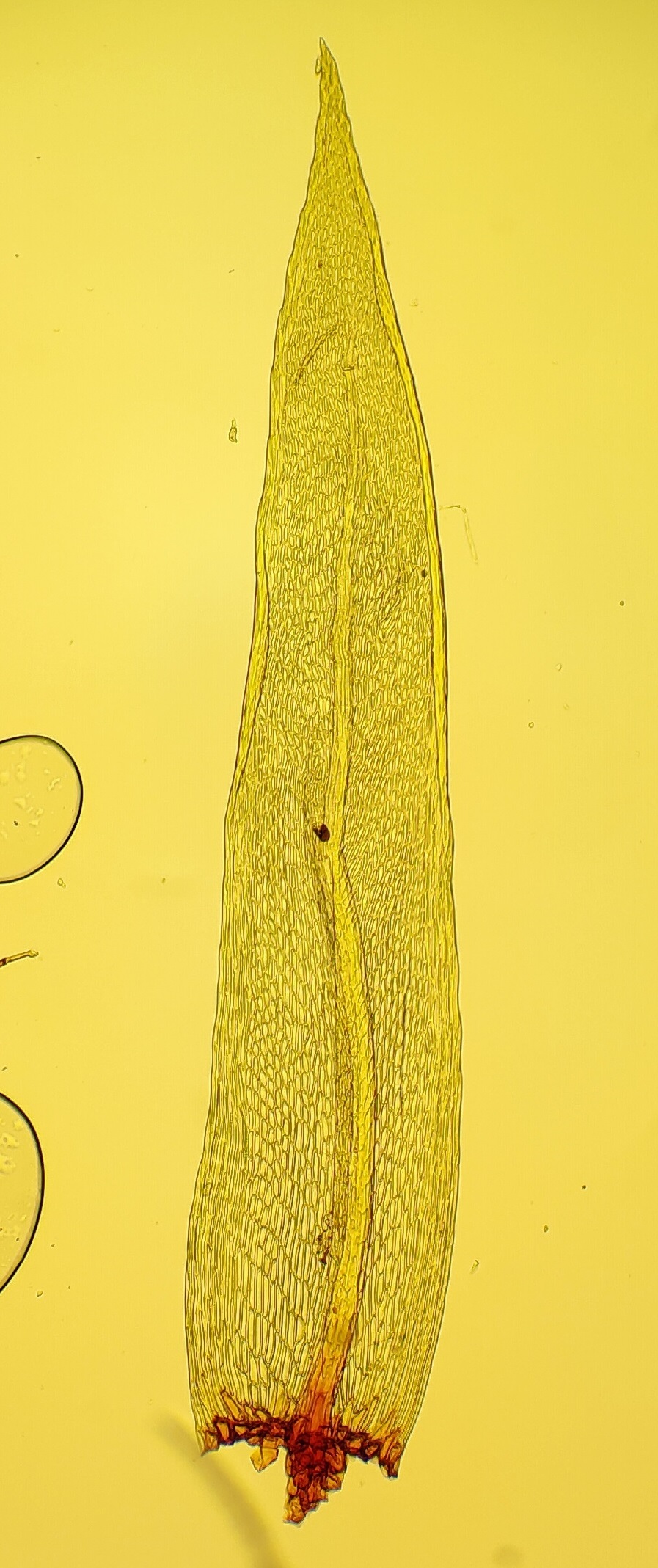Daltonia splachnoides
(Sm.) Hook. & TaylorSynoicous or autoicous. Asexual reproduction occasionally by fusiform, orange gemmae produced on the leaf surface. Tufts on small branches and twigs, often Hedycarya angustifolia, green to yellowish green, glossy. Stems 5–10 mm long, simple or branched, reddish brown, with reddish rhizoids, usually along most of length, central strand absent. Leaves erecto-patent when moist, flexuose when dry, linear lanceolate to elliptic-lanceolate, 1.45–3.5 mm long, 0.2–0.5 mm wide, keeled abaxially along costa to flat; costa single, extending at least three quarters of leaf length; apex gradually acuminate, without a hairpoint; margins entire, recurved, with 1–6 rows of more elongate, linear cells, 75–150 μm long, 7–10 μm wide, forming a border; cells away from margin in apical half irregular in size and shape, hexagonal to narrowly and irregularly rhomboidal to short-fusiform, (10–) 25–45 (–105) μm long, 3.5–13 μm wide, gradually transitioning to basal laminal cells near base; basal laminal cells away from margin more rectangular, 22–100 μm long, 6–18 μm wide; cells at insertion and in alar region orange, 25–50 μm long, 7–25 μm wide. Setae 3–12 mm long, reddish, scabrous towards capsule, smooth near base, not twisted. Capsule inclined or vertical, ovoid, oblong or ellipsoid, 0.7–1.25 mm long, straight, brown. Operculum rostrate from conic base, 0.6–1.3 mm long.
OtP, HSF, OtR, Strz. Cosmopolitan. Also QLD and Tas. In swamps, wet sclerophyll forest or cool-temperate rainforest, mostly in the Otways, but with a few records from a wet gully in the Dandenongs and near Warragul.
 Spinning
Spinning

